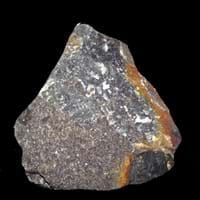Definition
Obsidian is a naturally occurring volcanic glass formed as an extrusive igneous rock. It is produced when felsic lava extruded from a volcano cools rapidly with minimum crystal growth
Dolomite is a sedimentary rock containing more than 50 percent of the mineral dolomite by weight
Origin
Ethiopia
Southern Alps, France
Discoverer
Obsius
Dolomieu
Etymology
From Latin obsidianus, misprint of Obsianus (lapis) (stone) of Obsius
From French, from the name of Dolomieu (1750–1801), the French geologist who discovered the rock
Class
Igneous Rocks
Sedimentary Rocks
Sub-Class
Durable Rock, Medium Hardness Rock
Durable Rock, Medium Hardness Rock
Group
Volcanic
Not Applicable
Other Categories
Opaque Rock
Coarse Grained Rock, Fine Grained Rock, Medium Grained Rock, Opaque Rock
Color
Black, Blue, Brown, Green, Orange, Red, Tan, Yellow
Black, Brown, Colourless, Green, Grey, Pink, White
Durability
Durable
Durable
Scratch Resistant
Yes
Yes
Appearance
Shiny
Glassy or Pearly
Interior Uses
Decorative Aggregates, Interior Decoration
Decorative Aggregates, Homes, Interior Decoration
Exterior Uses
Garden Decoration
Garden Decoration, Office Buildings
Other Architectural Uses
Not Yet Used
Not Yet Used
Construction Industry
Arrowheads, Cutting Tool, Knives, Scrapers, Spear Points
As a Flux in the Production of Steel and Pig Iron, As a Sintering Agent in Steel Industry to process Iron Ore, As Dimension Stone, Cement Manufacture, for Road Aggregate, Making natural cement, Manufacture of Magnesium and Dolomite Refractories, Production of Glass and Ceramics, Serves as an Oil and Gas Reservoir rock
Medical Industry
Surgery
Taken as a Supplement for Calcium or Magnesium
Antiquity Uses
Artifacts, Jewellery
Artifacts, Jewellery, Monuments, Sculpture, Small Figurines
Commercial Uses
Creating Artwork, Mirror, Used in aquariums
An Oil and Gas Reservoir, As a Feed Additive for Livestock, Gemstone, Metallurgical Flux, Production of Lime, Soil Conditioner, Source of Magnesia (MgO)
Types
Fireworks Obsidian, Mahogany, Sheen Obsidian, Snowflake obsidian and Velvet Peacock Obsidian
Boninite and Jasperoid
Features
Blocks negativity, Helps to protect against depression
Host Rock for Lead, Traps for subsurface fluids like Oil and Natural Gas., Zinc and Copper Deposits
Archaeological Significance
Monuments
Not Yet Used
Used
Famous Monuments
Not Applicable
Data Not Available
Sculpture
Not Yet Used
Used
Famous Sculptures
Not Applicable
Data Not Available
Figurines
Not Yet Used
Used
Formation
When the lava is released from volcano, it undergoes a very rapid cooling which freezes the mechanisms of crystallization. The result is a volcanic glass with a uniform smooth texture.
Dolomite rocks are originally deposited as calcite or aragonite rich limestone, but during diagenesis process, the calcite or aragonite is transformed into dolomite.
Mineral Content
Not Available
Clay Minerals, Pyrite, Quartz, Sulfides
Compound Content
Aluminium Oxide, CaO, Iron(III) Oxide, FeO, Potassium Oxide, MgO, MnO, Sodium Oxide, Phosphorus Pentoxide, Silicon Dioxide, Titanium Dioxide
NaCl, CaO, Carbon Dioxide, Magnesium Carbonate, MgO
Types of Metamorphism
Burial Metamorphism, Cataclastic Metamorphism, Contact Metamorphism
Burial Metamorphism, Cataclastic Metamorphism, Contact Metamorphism
Types of Weathering
Biological Weathering, Chemical Weathering, Mechanical Weathering
Not Applicable
Types of Erosion
Chemical Erosion, Coastal Erosion, Glacier Erosion
Not Applicable
Grain Size
Not Applicable
Medium to Fine Coarse Grained
Fracture
Conchoidal
Conchoidal
Porosity
Very Less Porous
Less Porous
Luster
Vitreous
Vitreous and Pearly
Cleavage
Non-Existent
Perfect
Toughness
Not Available
1
Specific Gravity
2.6-2.7
2.8-3
Transparency
Translucent
Transparent to Translucent
Density
2.6 g/cm3
2.8-2.9 g/cm3
Resistance
Heat Resistant, Impact Resistant
Heat Resistant, Pressure Resistant, Wear Resistant
Deposits in Eastern Continents
Asia
Afghanistan, Indonesia, Japan, Russia
China, India
Africa
Kenya
Morocco, Namibia
Europe
Greece, Hungary, Iceland, Italy, Turkey
Austria, Italy, Romania, Spain, Switzerland
Others
Not Yet Found
Not Yet Found
Deposits in Western Continents
North America
Canada, Mexico, USA
Mexico, USA
South America
Argentina, Chile, Ecuador, Peru
Brazil, Colombia
Deposits in Oceania Continent
Australia
New Zealand
New South Wales, Queensland, Yorke Peninsula
All about Obsidian and Dolomite Properties
Know all about Obsidian and Dolomite properties here. All properties of rocks are important as they define the type of rock and its application. Obsidian belongs to Igneous Rocks while Dolomite belongs to Sedimentary Rocks.Texture of Obsidian is Glassy whereas that of Dolomite is Earthy. Obsidian appears Shiny and Dolomite appears Glassy or Pearly. The luster of Obsidian is vitreous while that of Dolomite is vitreous and pearly. Obsidian is available in black, blue, brown, green, orange, red, tan, yellow colors whereas Dolomite is available in black, brown, colourless, green, grey, pink, white colors. The commercial uses of Obsidian are creating artwork, mirror, used in aquariums and that of Dolomite are an oil and gas reservoir, as a feed additive for livestock, gemstone, metallurgical flux, production of lime, soil conditioner, source of magnesia (mgo).










